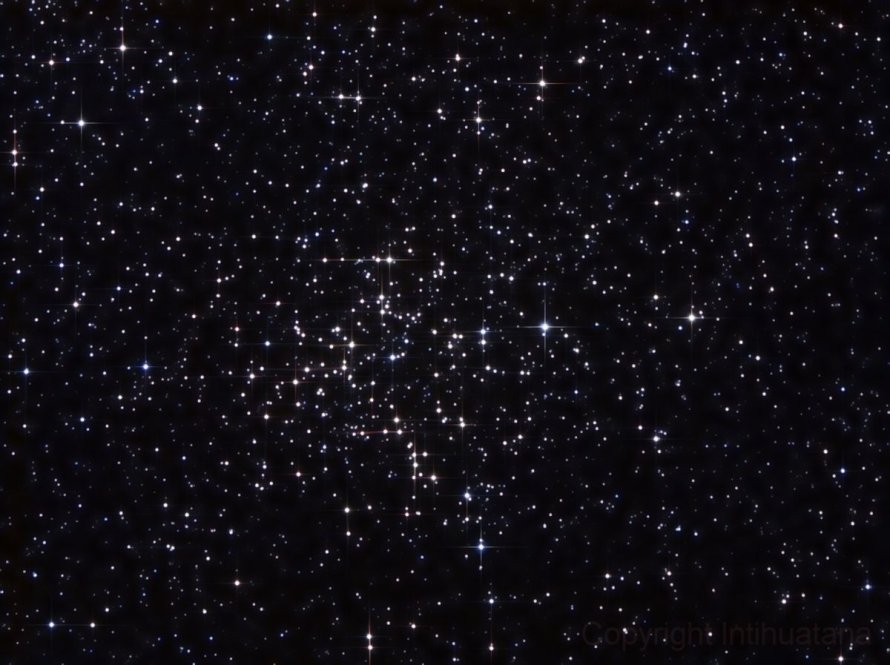M38 (NGC 1922) - Starfish Cluster
Messier 38 (NGC 1922), also known as the Starfish Cluster, is an open cluster located in the constellation Auriga, in the Perseus Arm of the Milky Way Galaxy in the Local Group of galaxies. M38 is 3500 light years away from Earth.
M38 is best viewed during winter, is magnitude 7.4, and can be viewed with binoculars. M38 is 21' in apparent size. For reference, the full moon is 30'.
Observing difficulty: Easy
- Name:
- Starfish Cluster
- Type:
- open cluster
- Constellation:
- Auriga
- NGC or IC:
- NGC 1922
- Magnitude:
- 7.4
- Viewing:
- binoculars
- Size:
- 21'
- Distance (light years):
- 3500 LY
- RA:
- 5h 28.7m
- Dec:
- 35 50'
- Season:
- winter
- Milky Way location:
- Perseus Arm
- Galaxy group:
- Local Group
- Messier Marathon #:
- 20
* The naked eye can see up to magnitude ~7-8 objects under ideal dark sky conditions.
A Dazzling Open Cluster in Auriga
Positioned in the constellation Auriga, Messier 38 (also known as M38 or NGC 1912) is a prominent open star cluster that captures the attention of both professional astronomers and amateur stargazers alike. This article examines the intricacies of Messier 38, including its brightness, location, and the practicalities of observing it from Earth.
Historical Context
M38 was discovered by Italian astronomer Giovanni Batista Hodierna before 1654, and later catalogued by French astronomer Charles Messier in 1764. It forms part of a trio of open clusters in Auriga, along with M36 and M37. Of the three, M38 is the most northerly positioned.
Physical Characteristics and Magnitude
Messier 38 is estimated to be approximately 4,200 light-years away from Earth, and its age is determined to be around 220 million years. It houses over 100 stars, the brightest of which is a yellow giant shining at magnitude 7.9. With an overall apparent magnitude of 6.4 and a diameter of about 25 light-years, M38 is slightly dimmer and larger than its neighbour M37.
Astronomical Significance
The scientific interest in M38 lies primarily in its stellar population and the insights it provides into the lifecycle of stars. It's particularly noteworthy for the presence of several red giants, indicators of a more advanced stage in stellar evolution. Studying these clusters helps astronomers understand the processes that govern star formation and evolution.
Finding and Observing M38
M38, like its companions M36 and M37, resides in the constellation of Auriga, the Charioteer. It is located roughly 2.5 degrees northwest of M36. For the best chances of locating M38, one should start at the bright star Capella and travel in the direction of the foot of Gemini. M38 will appear in the same wide field view as M36 in binoculars or a wide-field telescope.
While it's visible to the naked eye in very dark, clear skies, M38 is best observed with a telescope or binoculars. Even a small telescope will resolve the cluster into a rich field of stars, while larger telescopes will reveal its unique star pattern that some observers liken to a Greek letter Pi or an oblique cross.



